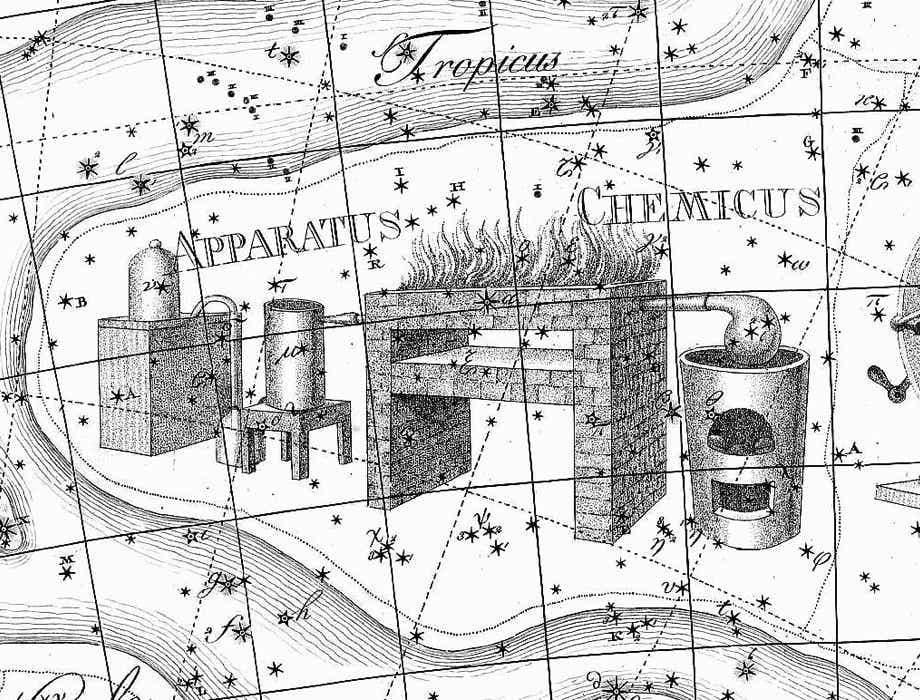
Genitive: Fornacis
Abbreviation: For
Size ranking: 41st
Origin: The 14 southern constellations of Nicolas Louis de Lacaille
An obscure constellation introduced by the Frenchman Nicolas Louis de Lacaille after his trip to the Cape of Good Hope to observe the southern stars in 1751–52, depicting a chemist’s furnace used for distillation. It lies tucked into a bend in the river Eridanus.
Lacaille originally called it le Fourneau on his 1756 planisphere and showed it as a simple set-up with an alembic and a receiver, as described in his accompanying notes. He Latinized the name to Fornax Chimiae on the 1763 edition of his chart and catalogue.
It is sometimes said that Lacaille invented the constellation to honour his countryman Antoine Lavoisier, one of the founders of chemistry. This is a misunderstanding, since Lavoisier was only 13 years old when Lacaille’s chart of the southern constellations was first published. In fact, the connection with Lavoisier was due to Johann Bode who reinvented the constellation nearly half a century later in his Uranographia atlas of 1801. Bode’s depiction of Fornax (see illustration below), far more complex than Lacaille’s simple design, was based on Lavoisier’s diagram of his experiment to decompose water into its constituents of hydrogen and oxygen, as published in Traité élémentaire de chimie (1789). As part of his reinvention, Bode retitled the constellation Apparatus Chemicus, although most astronomers continued to use Lacaille’s original name.
In 1845 the English astronomer Francis Baily shortened its name to Fornax in his British Association Catalogue, acting on a suggestion by John Herschel that all Lacaille’s two-word names for constellations should be reduced to one. It has been known as Fornax ever since.
Its brightest star, Alpha Fornacis, is only of magnitude 3.9.
Fornax was portrayed under the name Apparatus Chemicus on Chart XVII of Johann Bode’s Uranographia (1801). Bode depicted it as Antoine Lavoisier’s experiment to decompose water into hydrogen and oxygen. Click to see Lacaille’s much simpler original.
Chinese associations
In the Chinese constellation system, a triangle of faint stars in Fornax (probably Nu, Pi, and Mu) formed Tianyu, grain piled in ricks in the fields. The grain ricks were part of the overall harvest scene in this part of the sky that also included Fuzhi, the reaping sickle, in adjoining Sculptor, and granaries to the north in Cetus.
© Ian Ridpath. All rights reserved




